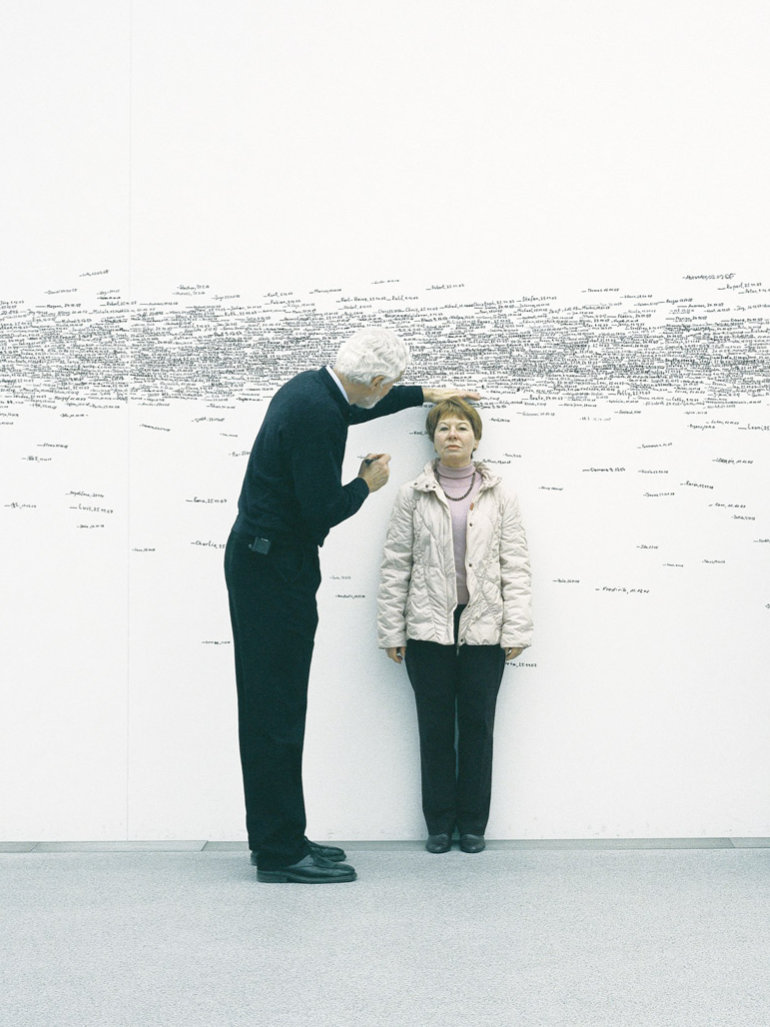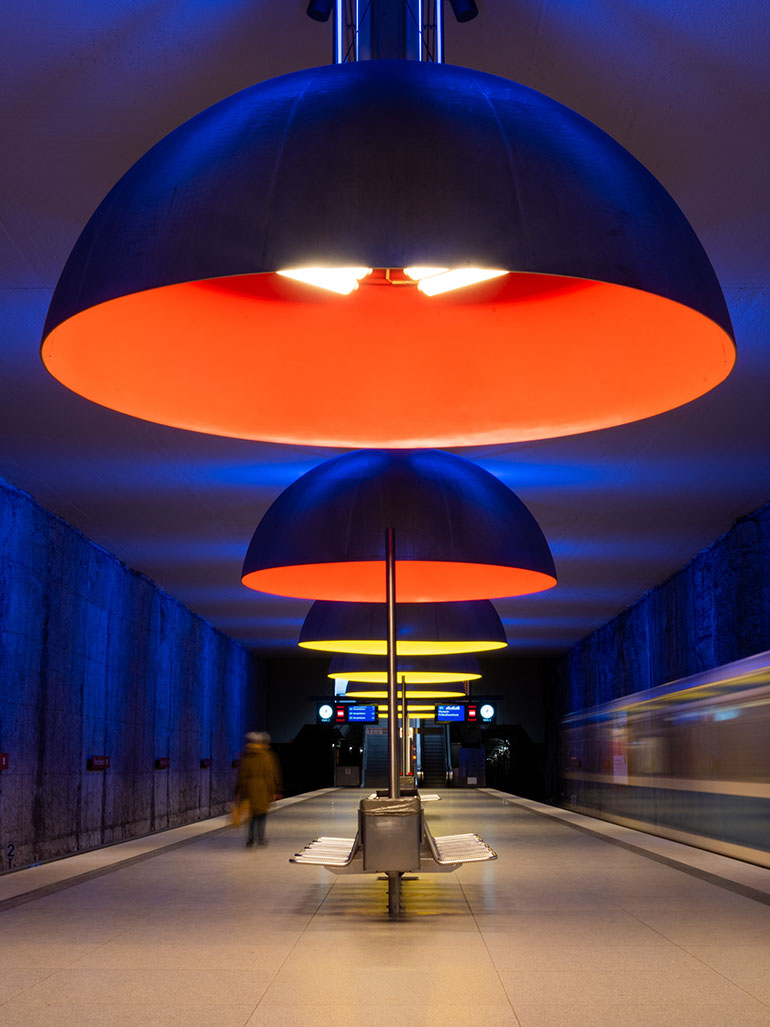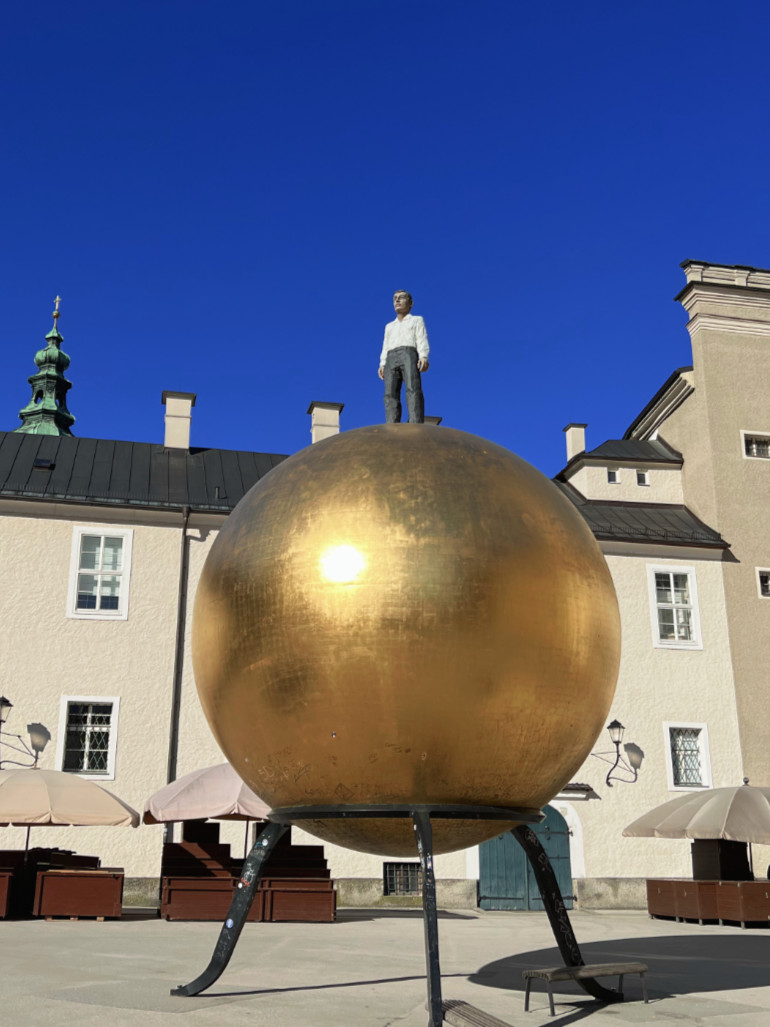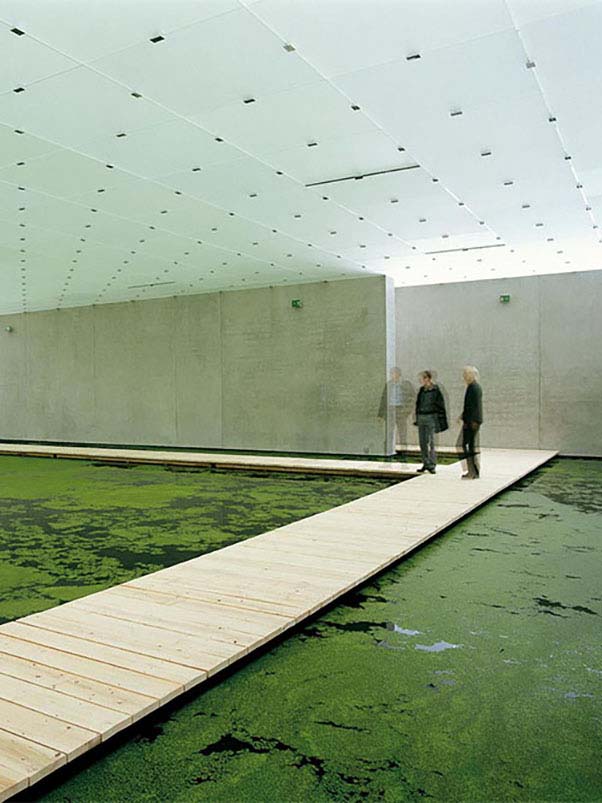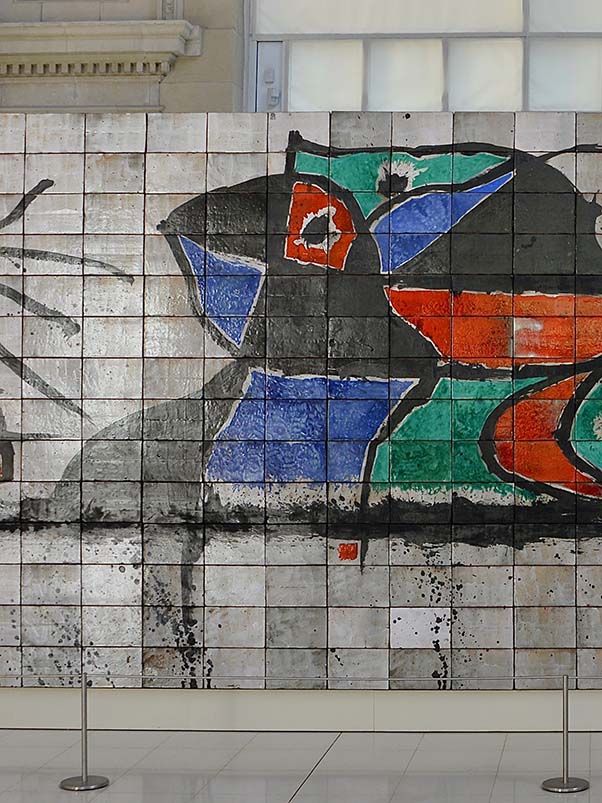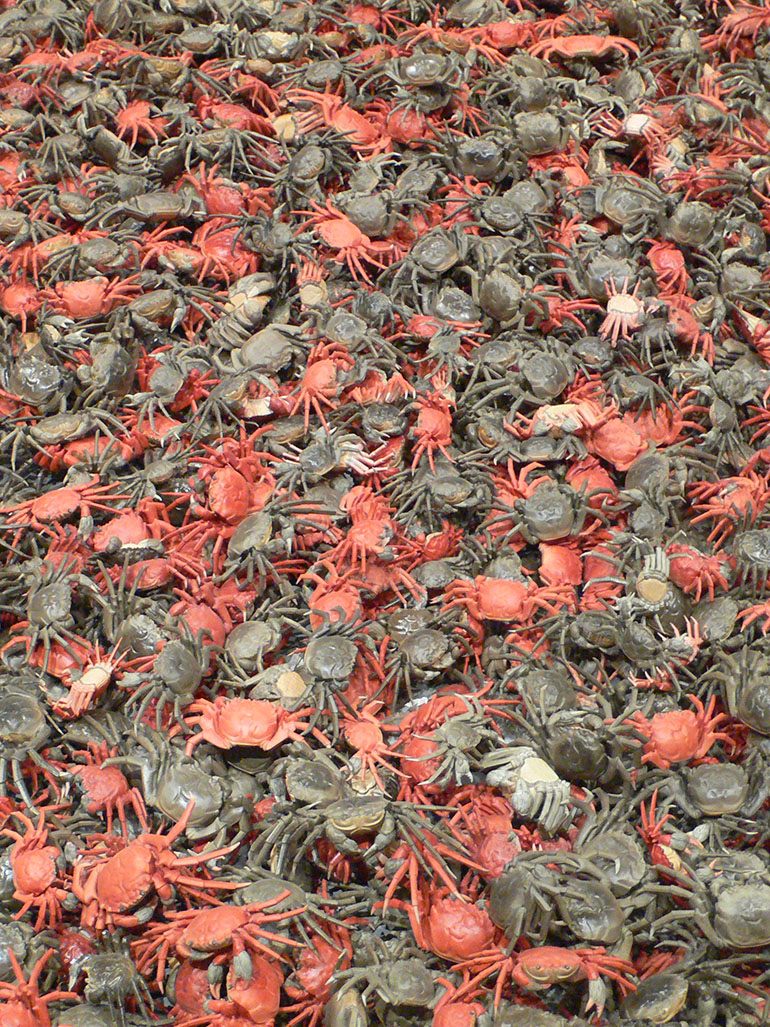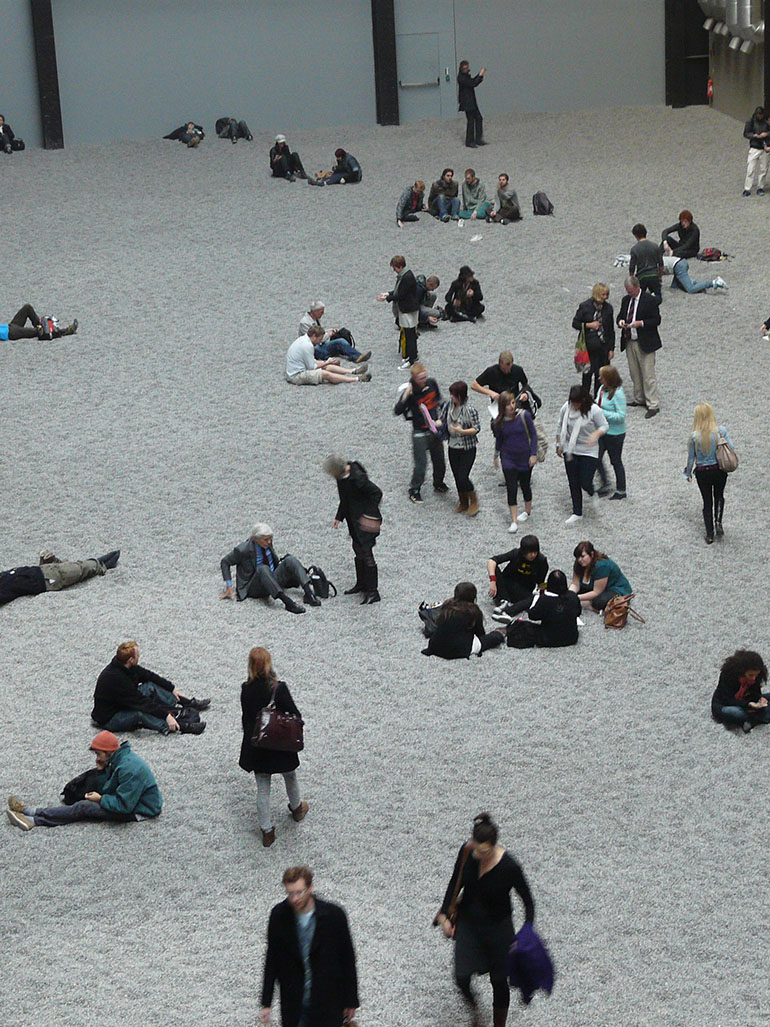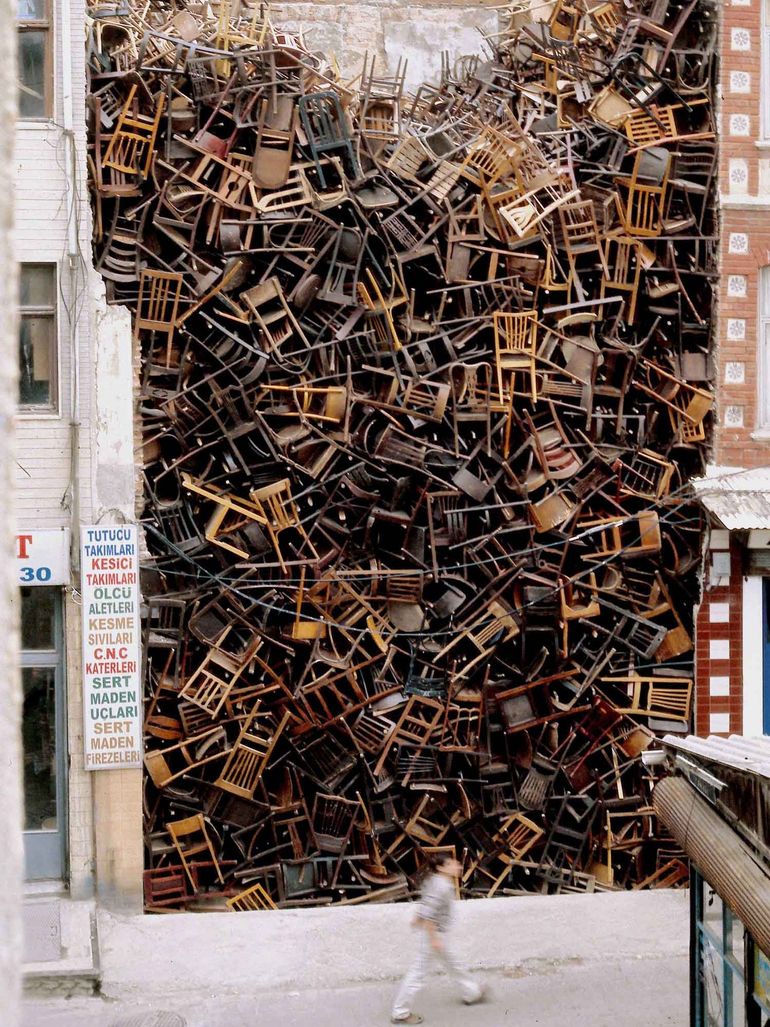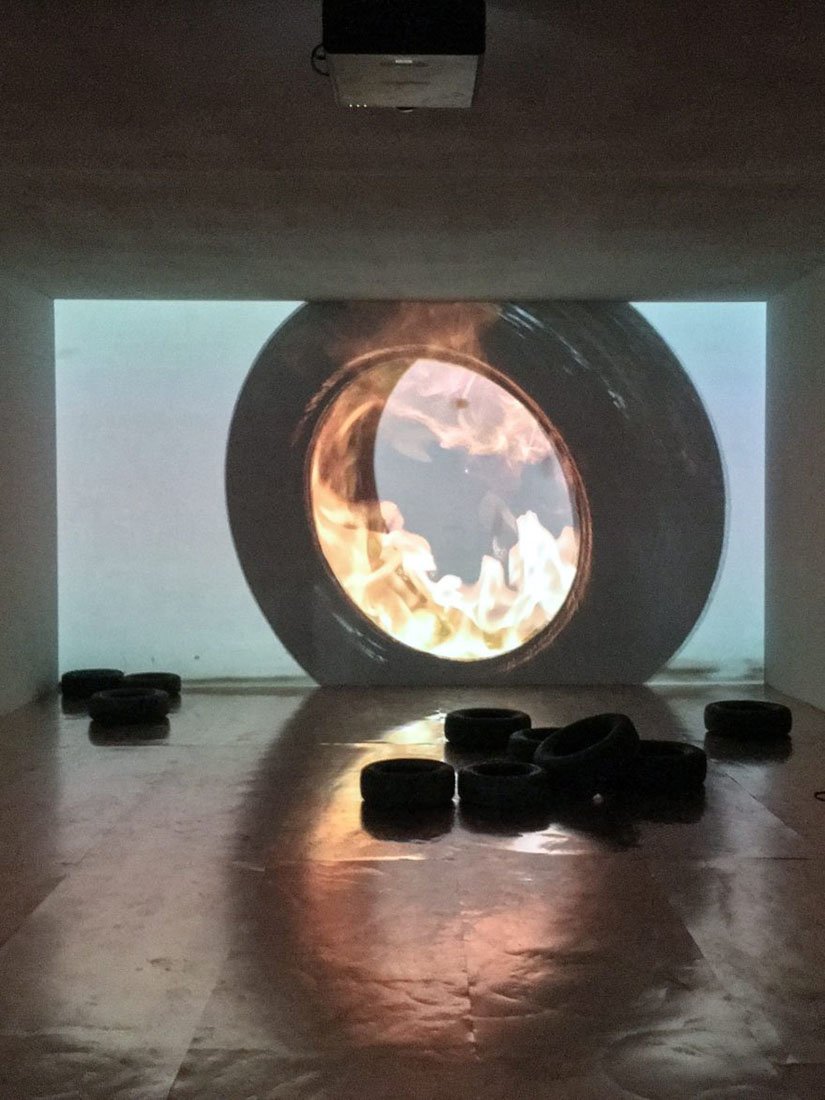
Overview
Ai Weiwei 1 is unmistakably one of the most influential and equally controversial 2 Chinese artists in recent history. He became famous worldwide in 2009 thanks to his highly celebrated art project, Remembering, an art piece he created to honor over 80,000 Chinese, most of whom were school children who perished in the May 2008 Sichuan earthquake. It was so captivating and popular that it rubbed the Chinese ruling regime the wrong way, and Ai Weiwei’s career has never been the same.
The sad side of Remembering aside, Ai Weiwei is one of the most exhilarating artists in the modern art world. He has managed to produce one impressive artwork after another. He is perhaps best known for his work on the Beijing National Stadium for the 2008 Summer Olympics, collaborating with the Swiss architecture firm Herzog & de Meuron. His focus on human rights and social change eventually led to his detainment by Chinese authorities for nearly three months in 2011. The Chinese government later supplied charges of tax evasion against Ai, which he vehemently denies. Since his detainment, Ai has been kept under constant surveillance by the government—a circumstance that has led him to create a series of new works.
Weiwei’s most remarkable ability is to traverse between just about any art form, from political activism to design to visual arts and everything in between. Let’s delve right into the exciting world of Ai Weiwei, shall we?
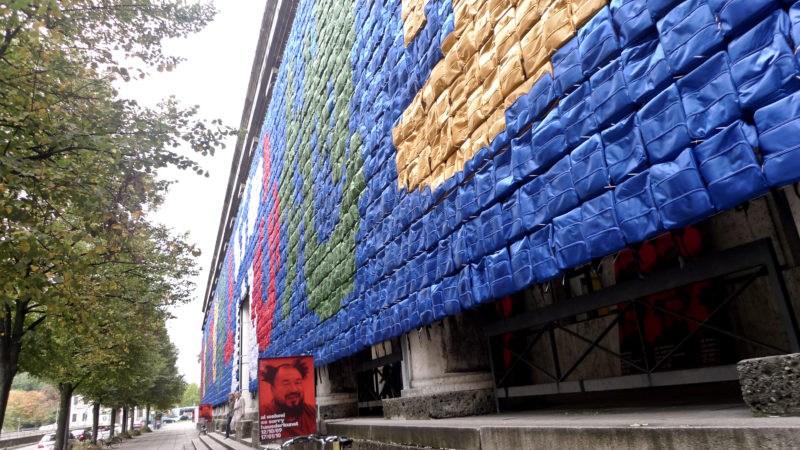
Remembering, 2009
For his one-man show in Munich’s 3 Haus der Kunst in 2009, he created a simple yet moving installation on the façade 4 of the museum. He used 9000 school backpacks to spell out the words “She lived happily for seven years in this world” in Mandarin. What a spectacle to behold, right? The story behind the installation, however, might be hard to swallow.
In the aftermath of the Sichuan earthquake in 2008, many school buildings were destroyed, killing thousands of children. When Ai Weiwei visited these sites, he couldn’t help notice study materials and school backpacks littered around in the debris. The sight was quite disheartening, but more so was the words of a mother of one of the deceased children – that she’d like her daughter to be remembered that “she lived happily for seven years in this world.”
Each backpack represents a life lost in the earthquake in the Chinese province of Sichuan in 2008. Ai used five bright and vibrant colors, such as blue, red, yellow and green, reflecting the psyche of a child, their joy and innocence. Besides, the colors have been used for the Toys R Us logo.
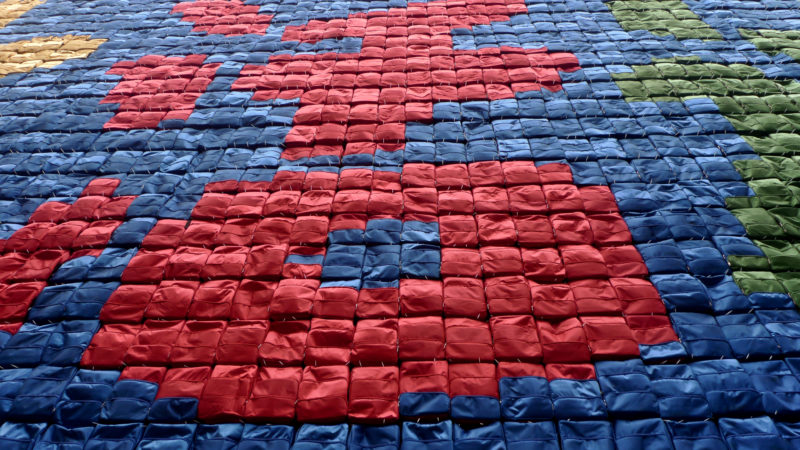
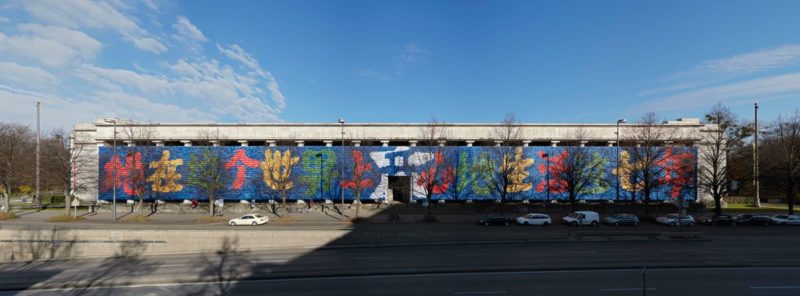
About the Sichuan Earthquake
The Great Sichuan Earthquake or Wenchuan earthquake was the most fatal ever to hit China since the Tangshan earthquake of 1976, killing more than 240,000 people and the strongest since the Chayu earthquake of 1950, measured at 8.5 on the Richter magnitude scale.
On a global scale, the quake was the 18th deadliest of all time. In terms of economic losses, the earthquake was the second largest in history, very close to the Tohoku earthquake in Japan. It also had the highest number of homeless 5 in history.
More than 5 million rooms were destroyed by the tremor, which is about 1.5 million houses, and over 21 million rooms were damaged, which translates to around 6 million homes. This is way more than the total number of houses in the entire continent of Australia.
The destruction of houses through shaking and landslides resulted in the 7th highest death toll in the last 100 years.
On June 17, 2019, another earthquake hit the same fault as the 2008 devastating earthquake, indicating that this is likely to occur again.
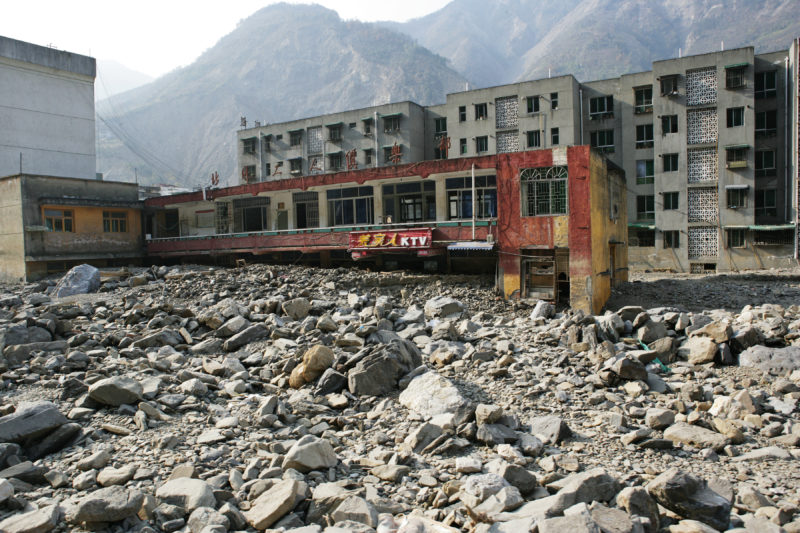
The Sichuan Earthquake facts
The Sichuan Earthquake occurred on May 12, 2008, in Wenchuan, China, at 14:28:01 China Standard Time. The tremor measured 8.0 Ms (7.9 Mw). Its epicenter was located some 80 kilometers west-northwest of Chengdu, the capital of the Sichuan province, with a focal depth of 19 kilometers.
The quake ruptured the fault for a radius of 240 kilometers (150 miles), with a surface displacement of some meters. The earthquake was felt in neighboring countries and as far away as Beijing and Shanghai, some 1,500 and 1,700 kilometers away, where buildings were swayed.
The aftershocks of the tremor continued to hit the region even after months had passed, causing further damages and causalities. The earthquake also had several other geohazards recorded, including more than 800 quake lakes and about 200,000 landslides distributed over an area of approximately 110,000 square kilometers.
Millions of people affected
In the aftermath of the earthquake, more than 69,000 people died, 68,636 being from Sichuan province. According to official reports, casualties reached 374,176, while 18,222 were listed as missing in July 2008.
The geohazards caused by the tremor contributed more, at least one-third, or the death toll. At least 4.8 million people were left homeless by the earthquake, though it is believed that the unofficial number could be as high as 11 million.
The Sichuan Earthquake of May 2008 flattened about four-fifth of the structures in the region. The villages and towns in the mountains were all wrecked, and many schools were buried.
How the earthquake occurred
The tremor was caused by the collision of the Eurasian plates and the Indian-Australian plates along the 249-kilometer- (155-mile-) long Longmenshan Fault thrust fault that the stresses created by the northward-moving Indian-Australian plate shifted a piece of the Plateau of Tibet towards the east.
Compressional forces produced by this shift clipped the ground the earth in two locations along the fault, prodding the ground upward by about 29 feet or 9 meters in some regions. A lot of the aftershocks took place in eh days, months, and even years later. For instance, in May 2010, a magnitude-5.0 struck Chengdu as a result of the 2008 earthquake.
The Longmenshan Fault stretches southwest to the northeast, lengthwise the eastern side of the Longmen Mountains or Longmen Shan and splits the flat Sichuan Basin from the Platea of Tibet.
The scientific community questioned whether the massive weight of water impounded by a reservoir near the earthquake’s epicenter could have had something to do with triggering the temblor.

Harsh crackdown by the Chinese government
The quake provoked a debate about the quality of construction of the many schools that collapsed in the affected region. Also, there were questions about the official number of death tolls given to children, as the public felt it was too low.
As the public questioned the quality of construction at the schools in the region and the accuracy in the death toll for students, the government immediately began a crackdown that was so harsh that it only increased the dissenting voices.
Many student deaths were blamed on the low-quality construction of school buildings. This can be attributed to the heat of the economic boom of China in the 2000s.
Activists who volunteered to help the victims of the quake were jailed under unclear circumstances. Public outcry about the quality of building materials used to construct schools was silenced. Even court cases were barred from being brought.
At a press conference by the then-vice governor of Sichuan, Wei Hong replied to questions about the quality of buildings that official investigations had found “the earthquake’s magnitude and intensity was the most important cause to structural damage.”
Ai also stated that the government was sympathetic to the parents who had lost their children in the disaster. But UNICEF research on the school buildings in the province of Sichuan, months after the disaster, found that thousands of them would have to be retrofitted or rebuilt to avert a similar crisis.
A report by Amnesty International in 2009 stated that bereaved parents who tried to get answers about the deaths of their children were thrown to jail.
The challenges faced in the rescue mission
The government of the Republic of China dedicated 1 trillion RMB, which is equivalent to USD146.5 billion, in the next three years to revamp the area affected by the earthquake under the Chinese economic stimulus program.
The Chinese government dominated the response to the disaster. Though they also invited international humanitarian assistance, only a few engaged directly. Some of the NGOs were already involved in responding to simultaneous disasters in neighboring countries, such as Cyclone Nargis, which made landfall in the neighboring state of Myanmar ten days earlier.
Another issue was the inaccessibility of the region and probably lack of local experience. With China’s economy experiencing a boom during this period in time, many might have felt that the government had full capacity to respond to the earthquake.
Valuable lessons for the future
While in every significant natural disaster, a deluge of assistance from international NGOs had massively had an impact. This was not the case with the Sichuan Earthquake, where the government mainly led the response, and very little international help was provided.
The Sichuan earthquake forced constructors to build better earthquake-resistant houses, as the recent earthquake in the region saw not even a single building collapse.
According to the UN, Asia is the most susceptible to disaster than any other region in the world.
Video of the installation
1 min 22 sec
Ai Weiwei’s biography
Early Life
Ai Weiwei’s biography
Early Life
Ai Weiwei is a contemporary artist and an avid Chinese civil rights activist, all rolled into one. He was born on August 28, 1957, to a poet father, Ai Qing, and a writer mother, Gao Ying. Like him, his father was a low-key activist and was consequently detained by the Nationalist regime on the suspicion that he was a Leftist. He was also imprisoned by Chairman Mao’s 6 regime after the formation of the People’s Republic of China, this time on suspicion of being a Rightist.
As expected from the communist Chinese government, the Qing family was exiled when Ai Weiwei was barely a year old. For more than 20 years, his family remained in exile in a small rustic village in the province of Xinjiang. Needless to say, their life wasn’t a bed of roses, as his father was forced to do back-breaking manual labor, including cleaning public toilets. In his childhood, Ai had to learn versatile skills like making bricks and carpentry. These are the practical skills that later came in handy when he started creating his artworks.
As if things weren’t worse enough, education in this small village was nearly nonexistent. Ai had to rely on one book – an extensive encyclopedia – as his sole source of education and formal knowledge. This, however, didn’t extinguish his zeal and passion for learning. Even as a child, his father’s poetic creativity and his family’s political stance made a huge impression on him and still influence his work to this date.

Ai Weiwei’s education in Beijing
Following Chairman Mao’s death, Ai and his parents were allowed to return from exile in 1976, ushering in a new chapter in Ai Weiwei’s life. At this juncture, at the age of 19, he joined the Beijing Film Academy, where he studied animation. It wasn’t long, however, before he was involved in the art scene in Beijing. In fact, he was one of the pioneering members of The Stars, a dissident group of political activists-cum-artists who advocated for the reintroduction of the concept of art as self-expression to China. This was a welcome move, following several decades of Chairman Mao’s anti-intellectual campaigns and anti-art policies. He also took to the streets with fellow artists and activists to agitate for democracy.
Ai Weiwei’s education in New York
After a few scuffles with the ruling regime, Ai moved to the United States in 1981. In the first few months there, he tried to spruce up his English and study in small bits at several different institutions. A year later, he relocated to New York City, where he started his studies under Sean Scully at the Parsons School for Design. Unfortunately, he dropped out after only six months and had to scrape by as a street artist and work odd jobs.
For more than a decade, he lived in New York, getting his feet wet in the city’s contemporary art scene and immersing himself in the scenic urban beauty. During that period, he took a multitude of photos and later condensed them into one of his celebrated works, New York Photos (1983-1993). What’s more, he made many trips around the United States and even became a blackjack player in the Atlanta casino scene. Funny enough, he was so good at blackjack that most American casino players still associate him with the game rather than being an artist.
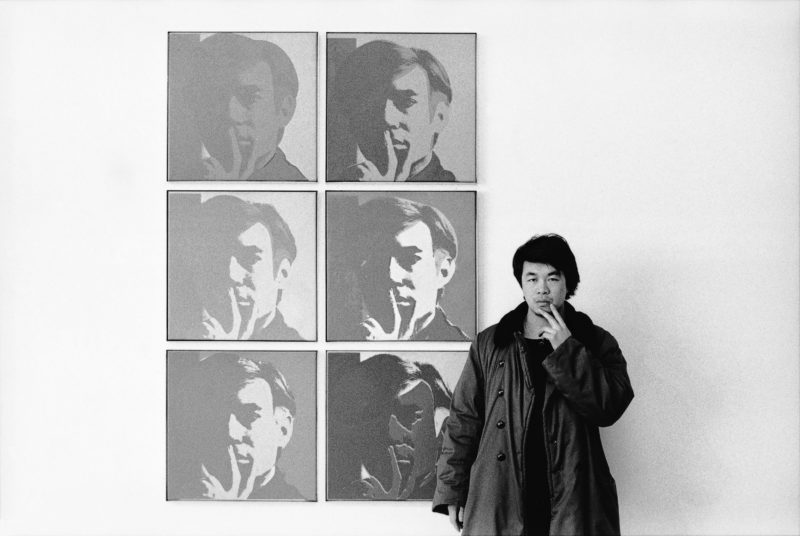
Professional career as an artists
Ai’s career as an artist met with a few headwinds during its formative years. However, in 1988, after spending seven years in the US, he debuted his solo show aptly titled “Old Shoes, Safe Sex” at Art Waves/Ethan Cohen Gallery in New York. Sadly, his father became ill and he had to go back to China to look after him. During this time, he wrote 3 popular books based on interviews with his favorite artists, including Jeff Koons 7, Marcel Duchamp, and Andy Warhol 8. In these books, he tried to connect the old-school generation of artists and contemporary ones in Beijing.
After his father’s passing in 1996, he went ahead to build a studio in Beijing. In 2003, he established FAKE Design, an architectural firm. Earlier in 1999, he made a break into the Chinese art scene when he was picked to represent the country through the Chinese Pavilion 9 at the Venice Biennale 10. Later that year, he co-curated “Fuck off”, an exhibition in Shanghai 11. Despite being detained and restricted by the Chinese government, Ai Weiwei has continued to thrive as an artist. Perhaps his best work yet – and most controversial – is Remembering, an artwork he exhibited in Munich, Germany, to honor Chinese children who lost their lives in the Sichuan Earthquake of 2008 due to the government’s neglect.
Awards and Recognition
He received the 2008 Chinese Contemporary Arts Award for Lifetime Achievement. In 2010, he received the Das Glas der Vernunft at Kassel Citizen Award, Germany. In December 2011, he was a runner-up in the Time’s Person of the Year Award. A year later, he received the inaugural Václav Havel Prize for Creative Dissent of the Human Rights Foundation and the International Center of Photography Cornell Capa Award. He has also been awarded the Appraisers Association Award for Excellence in the Arts, and Amnesty International’s Ambassador of Conscience Award, in Berlin, in 2013 and 2015, respectively.
Explore nearby
Haus der Kunst, Munich, Germany
 Roman Ondák's Measuring the UniverseExhibition ended (dismantled in 2022)1 km away
Roman Ondák's Measuring the UniverseExhibition ended (dismantled in 2022)1 km away
 Stephan Balkenhol’s Sphaera sculpture115 km away
Stephan Balkenhol’s Sphaera sculpture115 km away Olafur Eliasson's Meditated MotionExhibition ended (dismantled in 2001)155 km away
Olafur Eliasson's Meditated MotionExhibition ended (dismantled in 2001)155 km away Joan Miró's largest artworks183 km away
Joan Miró's largest artworks183 km away

